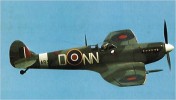
SUPERMARINE SPITFIRE Mk Vc580 viewsPossibly the most famous of all fighters, this particular aeroplane was re-activated to take part in the film "Battle of Britain" in which it flew nearly 50 hours. Now flying reularly at the Shuttleworth Collection.
|
|
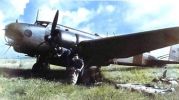
FIAT BR.20 "Cicogna"574 viewsThe Fiat BR.20 Cicogna was the standard Italian bomber of the mid to late 1930's, but it proved to be already obsolete during the French campaign during Italy's entry into World War Two. This bomber was first proposed by Celestino Rosatelli , who envisioned a standardized bomber, in 1934. The two engine BR.20 was first flown on 10 February 1936 at Torino Alitalia and the first 20 units were delivered on 26 November 1937.
Although the aircraft looked realtively sleek and modern, it was already outclassed by other competitors. Nevertheless, a total of 234 BR.20's, 279 BR.20M's and 15 BR.20Bis were built. The BR.20M (Modified) and the BR.20Bis were unique to the original in the change of nose section and engines. These aircrafts were operated in Malta, Battle of Britain, Yugoslavia and the Balkans.
|
|
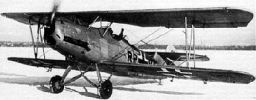
Arado Ar 66c572 viewsThe Ar 66 equipped flying schools from 1933 until into WWII. Over 6000 were built, maybe even 10000. Some were used as night harassments bombers on the eastern front.
|
|
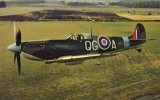
VICKERS ARMSTRONG SUPERMARINE SPITFIRE Mk 1A569 viewsSingle seat fighter powered by a Rolls Royce Merlin II or III liquid cooled in line engine. Maximum speed: 367mph. Armament: eight .303 machine guns. First deliveries to No. 19 Squadron Duxford, June 1938.
|
|
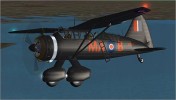
Westland Lysander mkIIIsd N.161 Squadron566 viewsmkIIIsd 1942 N161 Squadron - model for cfs2 - fs2004 - fs2002 simulator, on sale at Icarus:
http://www.icarusgold.com/Lysander.htm
|
|
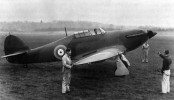
Hurricane MKI552 views The new Mk.I included a deHaviland or Rotol constant-speed metal propeller, ejector exhaust stacks for added thrust, metal-covered wings, armour and other changes. At the start of the war the RAF had taken on about 500 of this later design, and it formed the backbone of the fighter squadrons during the Battle of France and into the Battle of Britain.
Although it may have been an older design, the Hurricane was still a worthy fighter on its own and a reasonable match for the Messerschmitt Bf 109 it faced. In the photo The first production Hurricane Mk.I at [[Brooklands]], November 1937.
|
|
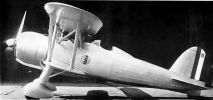
FIAT CR 42 falco547 viewsThe last of the biplane fighters, the Falco flew for the first time on 23 May 1938. It served on most fronts, first as a fighter, and quickly changed to ground support due to the inability of the aircraft to tackle modern allied aircraft. The Fiat CR42 was considered the most agile biplane fighter of WWII, and was certainly a hard target to hit, for the more modern but less maneuverable monoplanes. The Falco was lightly armed, as most of the fighters of it's time were, with 2 12.7mm Breda-SAFAT and still now holds the record of the fastest biplane (439 km/h) in WWII. At the time of El Alamein it was used as ground attack plane. The Falco finished its carreer as a night fighter defending Northern Italy.It was very nice to fly and very manouvrable, with a good pilot could even face the first series Hurricanes.
|
|
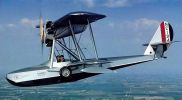
SavoiaMarchettiS-56B545 views
|
|
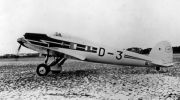
Heinkel He 70541 viewsThe Heinkel He 70 was an aircraft designed as a fast mailplane, inspired by the Lockheed Orion. Its streamlining inspired many other designs. Although useful, it had a relatively brief commercial career, before it was replaced by types which could carry more passengers. As a combat aircraft it was a not a great success, because it rapidly became outdated.
|
|
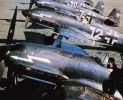
Heinkel He 100528 viewsDisappointed by the loss of the Luftwaffe's fighter orders to BFW and it's Bf 109 and the failure of the He 112, Heinkel set out to build a lighter and faster fighter that was also cheaper and easier to build. Even though the He 100 broke several world speed records, the RLM was solidly supportive of the Bf 109 and failed to order the He 100 into production. Six prototypes were eventually sold to the Soviet Union and three He 100D-0 went to Japan. The three He 100D-0's being armed with two MG 17 and a 20mm MG/FF. The remaining 12 He 100D-1 fighters were used to form a Heinkel-Rostock factory defense unit
|
|
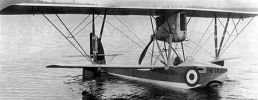
macchi-m5527 views
|
|
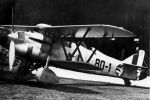
FIAT CR 32524 viewsEasily recognizable by its annular radiator and its closely cooled engine ,The C.R.32 "Freccia"(Arrow), was an excellent biplane fighter, being robust and fast. The C.R.32 was a single seat biplane fighter.The armament consisted of two 7.7mm Breda Safat machine guns (upgraded at 2 12.7 on later version) mounted on the side of the cooling radiator. Designed by Italian engineer Celestino Rosatelli, after first flew (in 1933),was built above in 1300 planes (including Spanish licensed production). In 1940, 300 planes were still in 1st line service.
|
|
|
|